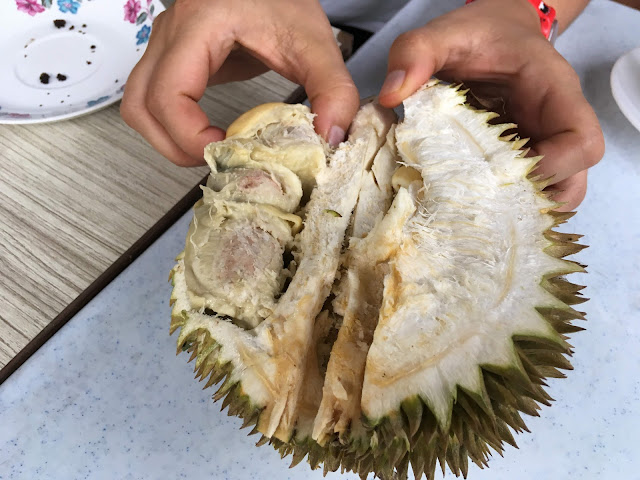While we were in Penang this weekend (see Child 1 and Buster's articles this week), we went to a huge air balloon festival. There were bouncy houses, lemonade, fireworks, and more!!! To learn about this life-changing-funnest-ever event, read on!!
 |
| Me, posing for a picture in front of the balloons. |
Well, we were having a day full of exploring Penang, and so we decided maybe we should come check out this Balloon festival. And boy, am I glad we did! I think first I'll tell you about the hot air balloons.
W
First, a little bit about the history of the hot air balloon:
In 1783 a scientist named Pilatre De Rozier launched the first hot air balloon. No people rode in it, only a duck, a sheep, and a rooster, but the balloon stayed in the air for roughly fifteen minutes before falling. After a long 216 years of work, in 1999 Bertrand Piccard and Brian Jones succeeded in an around the world flight. They flew for about 20 days. Find more about the history of hot air balloons here.
Next, a little bit about how the hot air balloon works:
As you may know, hot air rises. If you put a burner under a hot air balloon, the air inside the balloon will rise and push the balloon up with it. You could think of it like an air bubble in water, rising to the surface, but with hot air balloons, there is no surface. If you keep the burner going, the hot air balloon will climb higher and higher into the sky. However, if you stop the burner, the air will become cold and the balloon will slowly fall. Find more about how a hot air balloon works here.
There were a lot of hot air balloons in the sky that day. Some were just colored, others were in bizarre shapes- a house, a clown, an octopus... Here are some pictures:
I'm not sure how many balloons there were, but there were a lot!!!
All around the borders of the field, there were a bunch of big tents and trucks selling food and beverages. Mom and I got hot cups of buttery corn, potato sticks, and iced lemonades. Child 1, Buster, and Dad got meat sticks and salad and iced lemonades.
I hope you enjoyed reading this article! The experience certainly was fun for us. To find more about the hot air balloon festival, click here.
-Ice Cream Rain
 |
| Balloons. Big. |
 |
| More big balloons. |
Next, I'll tell you something about the food we got there.
All around the borders of the field, there were a bunch of big tents and trucks selling food and beverages. Mom and I got hot cups of buttery corn, potato sticks, and iced lemonades. Child 1, Buster, and Dad got meat sticks and salad and iced lemonades. |
| FOOD 😋 |
Next I'll tell you about the balloon houses and toys.
There were a bunch of balloon houses there, which I'm afraid I can't tell you much about because we didn't go on them, but I can tell you about the balloon toys.
Most of them were in water. The first one was a beachball that you get zipped into and pushed out on water.
 |
| Human beachballs |
The second was a sort of tube, with openings on either side to get out of and you could run forward and roll forwards on the water. The third one, the one Buster, Dad, and I went into, was a big ball with small holes on each side to get out of it. This one was on land, and if you ran in the ball it would roll the ball forwards, sort of like a hamster ball!
 |
| Human hamsters |
Next, and lastly, I'll tell you about the amazing nighttime experience.
What I haven't told you so far is that there's a huge dance floor in the middle of the field with colored disco searchlights going crazy from it, which helped liven the night up.
It all started when Buster, Dad, and I were walking back from the port-a-potties on the edge of the field. Suddenly, the ground shook with a BOOM and the sky lit up from fireworks.
 |
| Craziness |
Light sprayed across the sky, and the music from the dance floor blared. Fire shot up from the ground from the burners of the balloons to the music and it was awesome.
-Ice Cream Rain








































